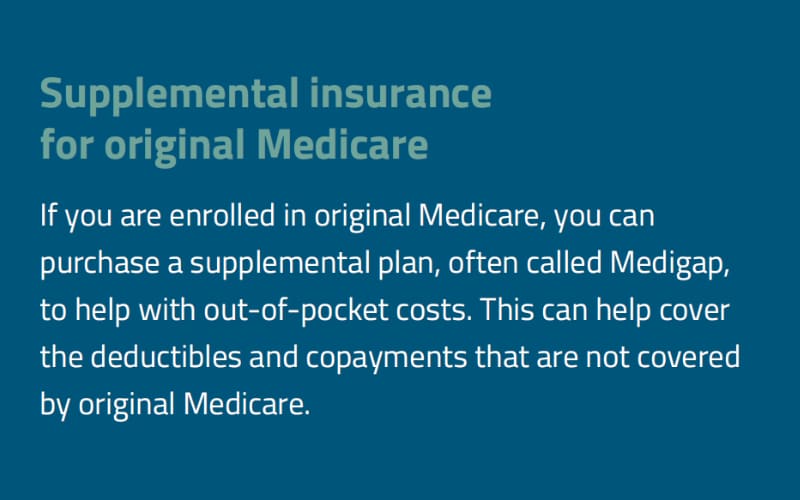Medicare is a government-provided health insurance program administered by the Centers for Medicare & Medicaid Services (CMS), a federal agency within the United States Department of Health and Human Services. Established in 1965, Medicare and other CMS programs have helped protect the health and well-being of millions of Americans for more than 50 years.
You are eligible for Medicare if you are a citizen of the United States or have been a legal resident for at least five years and:
- You are age 65 or older, and you or your spouse has worked for at least 10 years (or 40 quarters) in Medicare-covered employment.
- You are age 65 or older, and you or your spouse has worked 30 to 39 quarters in Medicare-covered employment.
- You are age 65 or older, and you or your spouse has worked zero to 29 quarters in Medicare-covered employment. You must enroll as a voluntary enrollee and pay the full part A monthly premium. Note: Low-income programs can help you pay these premiums if you meet the income and asset levels.
- You are younger than age 65 with a disability and have received Social Security Disability Insurance (SSDI) or Railroad Retirement disability payments for 24 months.
- You have amyotrophic lateral sclerosis (ALS) – also known as Lou Gehrig’s disease – and have received your first month of SSDI payments.
- You have end-stage renal disease (ESRD) – permanent kidney failure – and require dialysis or transplant.
Source: CAHealthAdvocates.org/the-basics/medicare-eligibility
Medicare is best understood by breaking it down to the ABCs – part A, part B, part C and part D.
Part A – Hospital insurance
Part A is a government-provided plan that helps cover inpatient hospital care, limited post-hospital care in a skilled nursing center, hospice care and some home health care.
Part B – Medical insurance
Part B covers certain doctor’s services, outpatient care, medical supplies and preventive services. For most services, part B covers 80% of charges with no out-of-pocket maximum. There is a monthly cost for part B, which is based on your income.
Part C – Medicare Advantage Plans
Unlike Medicare part A and part B, Medicare part C plans are offered by private companies as an alternative to original Medicare. Often called Medicare Advantage, these plans are approved by Medicare and bundle part A, part B, and usually part D together. More information on Medicare Advantage plans and how they differ from original Medicare can be found below in the “What are the two major Medicare options and how do they differ?” section.
Part D – Prescription drug coverage
Medicare part D helps cover the cost of prescription drugs, shots and vaccines. Like Medicare Advantage, part D plans are offered by Medicare-approved insurance companies. You can join a Medicare drug plan in addition to original Medicare (parts A and B) or a Medicare Advantage plan (part C).
Both original Medicare (parts A and B) and Medicare Advantage (part C) plans are available to adults 65 years old and older or with a qualifying disability, but there are several differences.
Original Medicare (parts A and B)
Original Medicare at a glance:
- Federally provided
- Covers basic services, such as inpatient hospital stays and regular doctor’s visits
- No annual limit on out-of-pocket costs
- Can be combined with part D for prescription drug coverage
Medicare Advantage (part C)
Medicare Advantage at a glance:
- Offered by private, Medicare-approved insurance companies
- Includes parts A and B and often part D
- Has a limit on out-of-pocket costs (excluding part D)
- Often includes additional benefits such as vision, hearing, dental and/or health and wellness programs
- Has an annual limit on what you pay out of pocket for part A and part B coverage

Because part C plans are provided by a Medicare-approved private insurance company, there is more variability in coverage than with original Medicare.
When selecting a plan, you must enroll in either a health maintenance organization (HMO) plan or a preferred provider organization (PPO) plan. HMO plans generally offer lower or no monthly premiums and access to an in-network primary care physician. PPO plans, however, are usually more expensive but offer more flexibility for out-of-network visits.
Torrance Memorial IPA contracts with several major Medicare Advantage HMO plans that provide optimal coverage for just about anything that might arise in your life, including coordination of care within your IPA. For more information on insurance plans that we partner with, visit our “Torrance Memorial IPA Health Plan Partners” page.
There are four main periods during which you can enroll in Medicare or make changes to your plan, but what changes you can make depend on the specific enrollment period. For more information about Medicare enrollment, visit our “What Is Open Enrollment?” page.
In addition to care guidelines provided by Medicare, Torrance Memorial IPA may use additional evidence-based guidelines when reviewing referrals. To access these guidelines, please follow the link for your HMO health plan below.
Aetna's Medicare guideline(s) can be located within the following link:
Please see the publicly accessible link to the Medicare UM Criteria (MCG): Aetna's 2024 Supplemental Guidelines Portal
Blue Shield of CA's Medicare guideline(s) can be located within the following link:
Please see the publicly accessible link to the Medicare UM Criteria (MCG): Blue Shield of CA's 2024 Medicare Member Resources
Humana's Medicare guideline(s) can be located within the following link:
Please see the publicly accessible link to the Medicare UM Criteria (MCG): Humana's 2024 Medical Coverage Policies
